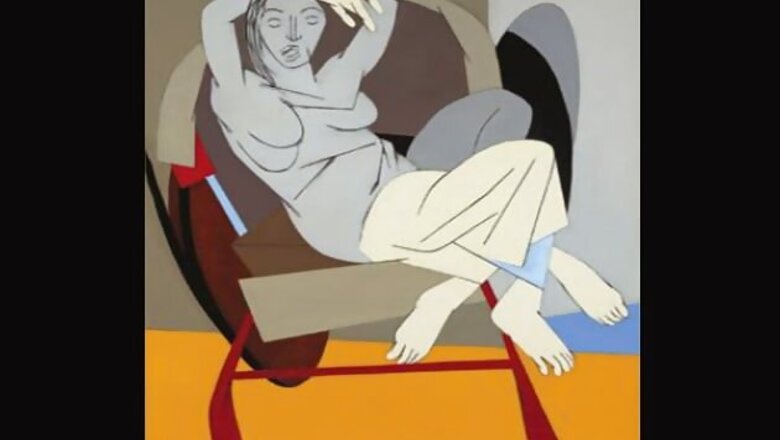
views
A painting is not a bond. A sculpture is not a share certificate. You like an MF Husain or Tyeb Mehta painting because you can look at it for hours and marvel at the brush strokes that evoke history, politics, religion, philosophy; interpreting the scope of human existence itself within the four corners of an otherwise mute canvas. It is a thing of beauty. And you appreciate it. That is why you are willing to spend a few lakhs or even crores to own one.
It is incidental that over the years, demand for these pieces of exquisite art will increase and the oldest law of economics will kick in, bringing you, what bean counters call, a fabulous return on investment. However, if that becomes the point of buying art, well, what’s the point? But then again, you can’t wish away the market, especially when the reputation of an artist often swells with the price tag.
About seven-eight years ago, Indian art and artists suddenly became cool across the world. Until then, Indian art was defined by a few doyens such as MF Husain, Tyeb Mehta, Akbar Padamsee, VS Gaitonde, FN Souza and SH Raza, whom jargon calls the modernists. As global interest in India started to rise with its buoyant economy, young artists became the toast of collectors across the world, bringing them fame and fortune. Some of them such as Subodh Gupta, Bharti Kher, Atul Dodiya, Jitish Kallat, NS Harsha, Riyas Komu, Sudarshan Shetty and TV Santosh became the flag bearers of Indian contemporary art.
As people began to see the pot of gold at the end of the rainbow, the art appreciating community expanded to include a number of well-heeled spenders who always felt that the cheques they wrote out should return to them as quickly as possible with a couple of additional zeroes.
Opportunists also decided to help those with shallow pockets by floating art funds - if you could not own a whole Souza canvas, you could perhaps lay claim to a corner of it.
Then in September 2008, Lehman Brothers collapsed. The ripples coursed through the art market as well, knocking out its bottom. In India, the effect was particularly severe. Artists who were hot property just months before found no takers. Many art funds bombed and some investors are yet to get back their money. A Delhi-based artist lamented that there were no buyers for a single work of his at a solo show last year.
Some see the downturn as serendipity. Richa Karpe, director at Altamount Capital, a firm that specialises in advising rich families on investments, says that 2008 was good because it brought a sense of reality. "Every artist cannot be a collector’s item 50 years from now," says Karpe. She says she gets scared when a family asks her to take them around and make them buy art. "It is dangerous territory to get into, as the objective is ‘how much money will I make?’."
The market has stabilised since those grim days. 2011 has been better for artists, but it came at a certain cost to the contemporaries who have had to settle for lower prices. The section that remained largely unaffected was that of the modernists, says Arvind Vijaymohan, director of Art Ventures, a Delhi-based art advisory firm.


















Comments
0 comment